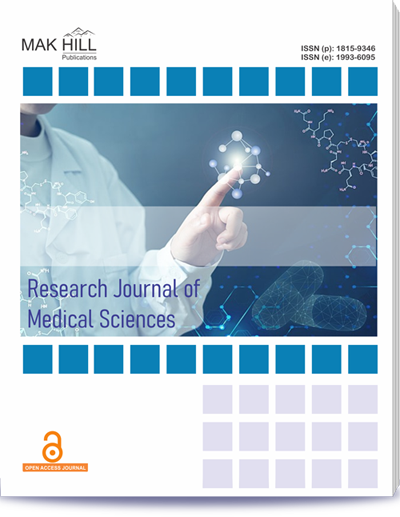
Research Journal of Medical Sciences
ISSN: Online 1993-6095ISSN: Print 1815-9346
Abstract
For every maternal death, there are many serious life‐threatening complications of pregnancy. Currently the near‐miss audit has been considered a better approach than a maternal death audit and can be used to identify what needs to be done to improve the quality of maternal health care. Present study was aimed to study maternal near miss cases at a tertiary hospital. Present study was single‐center, prospective, observational study, conducted in women who were pregnant or in labor or delivered or aborted up to 42 days from termination of pregnancy, admitted in the obstetric department, which met the comprehensive criteria of WHO admitted during study period and survived. In present hospital‐based study, 220 near‐missed cases were studied. Most of the patients were from the age group of 20‐24 years (45.9%) followed by 25‐29 years (29.09%) and 30‐34 years (9.54%). Majority cases were primigravida (40.9%). 128 cases (58.18%) underwent LSCS, 88 cases (40%) delivered vaginally. Hypertensive disorders of pregnancy (53.18%) contributed to the majority of near‐miss cases, followed by anemia (19.09%) heart disease (9.09%) abruptio placentae (6.36%) and respiratory disease (5.45%). In 52% of near‐miss cases, vascular and hematological dysfunction were prominent followed by cerebral causes (29.54%) due to increased prevalence of severe preeclampsia and antepartum eclampsia. Hypertensive disorders of pregnancy are the most common cause of maternal morbidity in the study group, followed by anemia.
How to cite this article:
Drishti Doshi, Dhuldev Thengal and Sanjay Khandekar. Study of Maternal Near Miss Cases at a Tertiary Hospital.
DOI: https://doi.org/10.36478/10.59218/makrjms.2024.3.20.24
URL: https://www.makhillpublications.co/view-article/1815-9346/10.59218/makrjms.2024.3.20.24